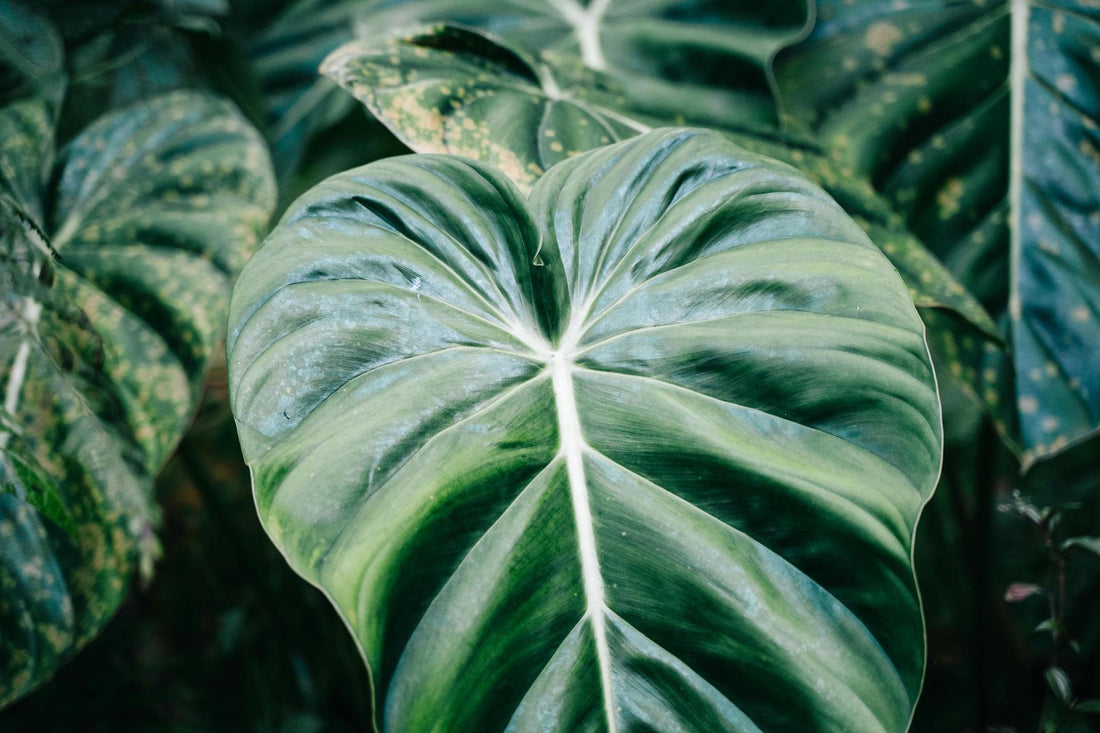Philodendron Verrucosum, with its luxurious velvety leaves and tropical allure, is a captivating addition to any indoor plant collection. But nurturing this exotic beauty requires a blend of attention and finesse. In this comprehensive guide, we'll delve into the art of caring for Philodendron Verrucosum, from providing the perfect environment to troubleshooting common issues. Let's embark on a journey to ensure your velvet leaf philodendron thrives in your home sanctuary.
Understanding Philodendron Verrucosum: Native to the lush rainforests of Central and South America, Philodendron Verrucosum boasts heart-shaped leaves adorned with striking white veins, creating a visually stunning display. Its growth habits include climbing or trailing, making it a versatile choice for various indoor settings. This plant's slow growth rate adds to its mystique, requiring patience and dedication from its caretaker.
Creating the Ideal Environment:
- Light: While Philodendron Verrucosum can tolerate lower light conditions, it thrives in bright, indirect sunlight. Position it near a window where it receives filtered sunlight throughout the day, protecting it from harsh midday rays.
- Temperature: Maintain a consistent temperature range between 18-27°C to mimic its native tropical habitat. Avoid exposing the plant to cold drafts or sudden temperature fluctuations.
- Humidity: Humidity is paramount for Philodendron verrucosum's well-being. Aim for humidity levels of 60% or higher by misting the leaves regularly, placing a humidifier nearby, or utilizing a pebble tray filled with water beneath the plant.
- Soil: Opt for a well-draining, aerated potting mix rich in organic matter. A blend of peat moss, perlite, and bark works well to provide the necessary nutrients while allowing excess water to drain freely.
- Potting: Repot your Philodendron Verrucosum every 1-2 years during the spring months, refreshing the soil and providing ample space for root growth. Choose a pot that is slightly larger than the current one to accommodate its expanding root system.
Watering and Feeding:
- Watering: Strike a balance between keeping the soil consistently moist and avoiding waterlogged conditions. Water your Philodendron Verrucosum when the top inch of soil feels slightly dry to the touch, adjusting the frequency based on environmental factors such as temperature and humidity.
- Feeding: During the growing season, typically spring through summer, fertilize your Philodendron Verrucosum every 4-6 weeks with a balanced liquid fertilizer diluted to half strength. Reduce feeding frequency in the fall and winter when growth slows.
Maintenance and Pruning:
- Pruning: Regular pruning helps maintain the plant's desired shape, removes any dead or yellowing foliage, and promotes new growth. Use clean, sharp scissors or pruning shears to make precise cuts, ensuring proper air circulation within the plant.
- Support: As Philodendron Verrucosum grows, provide sturdy support such as a moss pole or trellis to encourage upward growth and prevent sprawling. Secure any aerial roots to the support structure using soft ties or twine.
Pest and Disease Management:
- Pest Control: Keep a vigilant eye for common pests such as aphids, spider mites, and mealybugs, especially in the leaf axils and undersides. Treat infestations promptly using insecticidal soap or neem oil, ensuring thorough coverage of affected areas.
- Disease Prevention: Maintain good airflow around the plant, avoid overwatering, and inspect for signs of fungal diseases such as root rot or leaf spot. If detected, adjust watering practices, remove affected foliage, and consider applying a fungicide according to label instructions.
Troubleshooting Common Issues:
- Yellowing Leaves: Yellowing leaves may indicate overwatering, underwatering, or nutrient deficiencies. Assess the soil moisture level, adjust watering frequency as needed, and ensure proper fertilization to address potential nutrient imbalances.
- Leaf Browning: Browning leaf tips or edges can result from low humidity, excessive fertilizer salts, or inconsistent watering. Increase humidity levels, flush the soil to remove excess salts, and maintain a consistent watering schedule to alleviate stress on the plant.
- Stunted Growth: Slow or stunted growth may stem from inadequate light, improper watering, or root congestion. Adjust the plant's location to receive more indirect sunlight, ensure proper watering practices, and consider repotting if the root system appears congested.
Caring for Philodendron Verrucosum is a rewarding endeavour that requires attention to detail and a deep appreciation for its natural beauty. By providing the ideal environment, practicing diligent watering and feeding routines, and addressing any issues promptly, you can ensure your velvet leaf philodendron thrives and flourishes as a stunning centerpiece in your indoor oasis. Embrace the journey of nurturing this tropical gem, and let its lush foliage bring joy and tranquility to your home.

